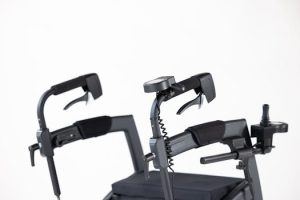Heat Mapping In-Store: Understanding Customer Behavior
The retail industry is constantly evolving and adapting to the changing customer behavior and preferences. With the rise of e-commerce, brick and mortar stores are facing tough competition to survive. As a result, retailers are turning to innovative solutions to understand and analyze customer behavior in their physical stores. One such solution that is gaining popularity is heat mapping in-store. In this article, we will delve into what heat mapping in-store is and how it can help retailers gain valuable insights into customer behavior.
Understanding Heat Mapping In-Store
Heat mapping is a data visualization technique that displays the distribution and intensity of data on a graphical representation. In terms of in-store customer behavior, heat mapping tracks and displays the areas of highest customer traffic and engagement in a store. It uses infrared sensors and video cameras to monitor customer movement and map out their behavior patterns in a physical store.
The Value of Heat Mapping for Retailers
Understanding customer behavior is vital for retailers to improve their in-store experience and drive sales. With heat mapping, retailers can gain valuable insights into the following aspects of customer behavior:
1. Foot Traffic and Engagement Areas
By analyzing the heat map data, retailers can identify the areas of the store that attract the most foot traffic and engagement. This enables them to strategically place high-margin or popular products in those areas to increase their chances of being seen and purchased by customers.
2. Dwell Time
Heat mapping also allows retailers to measure the average dwell time of customers in different areas of the store. This information is crucial in understanding which areas of the store are more engaging and which ones need improvement. Retailers can use this data to optimize the layout of their store and create more attractive and engaging displays to increase dwell time and ultimately, sales.
3. Customer Flow and Pathing
With heat mapping, retailers can track the customer flow and pathing in their store. This data provides valuable insights into how customers navigate through the store and which areas they tend to avoid. This information can help retailers optimize their store layout and improve the overall customer experience.
The Benefits of Heat Mapping for Customers
While the primary purpose of heat mapping is to help retailers improve their in-store experience, it also benefits customers in several ways:
1. Enhanced Shopping Experience
With heat mapping, retailers can optimize the layout and flow of their store, making it easier for customers to find what they are looking for. This results in a more pleasant and hassle-free shopping experience for customers.
2. Improved Product Availability
By strategically placing products in areas with high customer traffic and engagement, retailers can ensure that popular products are always in stock and easily accessible to customers. This results in improved customer satisfaction and the likelihood of repeat purchases.
3. Personalized Promotions
Heat mapping data can also help retailers personalize promotions and offers based on customer behavior patterns. By targeting specific areas of the store where customers spend more time, retailers can create tailored promotions that are more likely to resonate with customers and result in higher conversions.
Conclusion
Heat mapping in-store is a powerful tool that can provide retailers with valuable insights into customer behavior. By understanding their customers better, retailers can create a more engaging and personalized shopping experience, resulting in increased sales and customer satisfaction. With the ever-changing retail landscape, heat mapping in-store is becoming a must-have solution for retailers looking to stay ahead of the competition.




